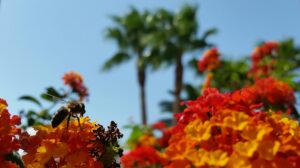Asters are beloved for their daisy-like flowers and vibrant colors, making them a popular choice for gardeners looking to add a burst of late-season color to their outdoor spaces. While typically grown in garden beds, asters can also thrive in pots, allowing even those with limited space to enjoy their beauty. In this comprehensive guide, we’ll delve into everything you need to know about successfully growing asters in pots, from selecting the right varieties to providing proper care for a spectacular display.
Understanding Asters
Botanical Background
Asters belong to the Asteraceae family and encompass a wide range of species, including New England asters (Symphyotrichum novae-angliae) and Michaelmas daisies (Symphyotrichum novi-belgii). These perennial plants are native to North America and are known for their star-shaped flowers that bloom in late summer and fall.
Varieties
There are numerous aster varieties available, offering a range of colors, sizes, and bloom times. Some popular varieties for container gardening include:
‘Purple Dome’: Compact with deep purple flowers.
‘Wood’s Blue’: Tall with blue-violet flowers.
‘Lady in Black’: Dark foliage with pink flowers.
‘Alert’: Vibrant pink flowers with yellow centers.
Selecting the Right Pot
Size and Material
Choosing the correct pot is crucial for the health and vigor of your asters:
Size: Opt for a pot that is at least 12-16 inches in diameter and depth to accommodate the plant’s root system.
Material: While plastic and ceramic pots are suitable, consider using terracotta pots for their breathability, which helps prevent waterlogging.
Drainage
Good drainage is essential for asters, as they dislike having their roots sitting in water. Ensure your chosen pot has adequate drainage holes at the bottom to allow excess water to escape.
Soil and Planting
Soil Composition
Asters thrive in well-draining soil with a slightly acidic to neutral pH (6.0 to 7.0). A high-quality potting mix amended with perlite or coarse sand works well to provide the necessary drainage and aeration.
Planting Process
Follow these steps to plant asters in pots successfully:
Preparation: Fill the pot with the prepared potting mix, leaving a few inches of space at the top.
Placement: Gently remove the aster plant from its nursery container and place it in the center of the pot.
Backfilling: Fill in the gaps around the plant with more potting mix, pressing down lightly to secure the plant in place.
Watering: Water thoroughly to settle the soil and ensure good root-to-soil contact.
Care and Maintenance
Sunlight Requirements
Asters thrive in full sun to partial shade, requiring at least 6 hours of direct sunlight daily for optimal growth and flowering. Place your pots in a location where they receive ample sunlight, such as a south-facing balcony or patio.
Watering Routine
Maintain consistent soil moisture to keep your asters healthy and blooming:
Regular Watering: Water your asters deeply whenever the top inch of soil feels dry to the touch.
Avoid Overwatering: Prevent waterlogging by allowing excess water to drain freely from the pot.
Fertilization Schedule
Feed your potted asters with a balanced, water-soluble fertilizer every 4-6 weeks during the growing season (spring to early fall). Follow the manufacturer’s instructions for application rates, as over-fertilizing can lead to excessive foliage growth at the expense of flowers.
Pruning and Deadheading
Encourage continuous blooming and maintain a tidy appearance by:
Deadheading: Remove spent flowers regularly to stimulate the production of new blooms.
Pruning: Trim back leggy or unruly growth to promote bushier, more compact plants.
Overwintering
Winter Protection
In regions with cold winters, protect your potted asters from frost damage by:
Mulching: Apply a thick layer of organic mulch, such as straw or shredded leaves, around the base of the plant to insulate the roots.
Moving Indoors: Consider overwintering your pots indoors in a cool, well-lit location, such as a garage or basement, if outdoor temperatures drop below freezing.
Common Pests and Diseases
Pest Management
While relatively resistant to pests, asters may occasionally attract aphids, spider mites, or powdery mildew. Monitor your plants regularly and treat any infestations promptly with organic insecticidal soap or neem oil.
Disease Prevention
To prevent common aster diseases like powdery mildew and aster yellows:
Air Circulation: Ensure good air circulation around your plants by spacing them adequately apart.
Watering Practices: Avoid overhead watering, as moisture on foliage can promote fungal growth.
Sanitation: Remove and dispose of any infected plant debris to prevent the spread of disease.
Harvesting and Uses
Floral Arrangements
Asters make excellent cut flowers, adding color and texture to floral arrangements. Harvest stems with fully open flowers in the morning for the longest vase life.
Dried Flowers
Preserve the beauty of asters by drying the flowers for use in crafts and decor. Hang bunches of flowers upside down in a warm, dry location with good air circulation until completely dried.
Troubleshooting Common Problems
Stunted Growth
Stunted growth may indicate nutrient deficiencies or compacted soil. Consider feeding your plants with a balanced fertilizer and loosening the soil around the roots to improve aeration.
Yellowing Leaves
Yellowing leaves can result from overwatering, underwatering, or nutrient imbalances. Adjust your watering schedule and consider fertilizing if necessary.
Poor Flowering
Insufficient sunlight, over-fertilization, or overcrowded roots can lead to poor flowering. Ensure your plants receive adequate sunlight and space, and avoid excessive feeding.
Conclusion
Growing asters in pots is a rewarding endeavor that allows gardeners to enjoy the beauty of these charming flowers even in small spaces. By selecting the right varieties, pots, and providing proper care, you can create stunning displays of color that brighten up your patio, balcony, or indoor living areas. Follow the tips and guidelines outlined in this guide, and you’ll be well on your way to successfully cultivating flourishing asters in pots. Happy gardening!





